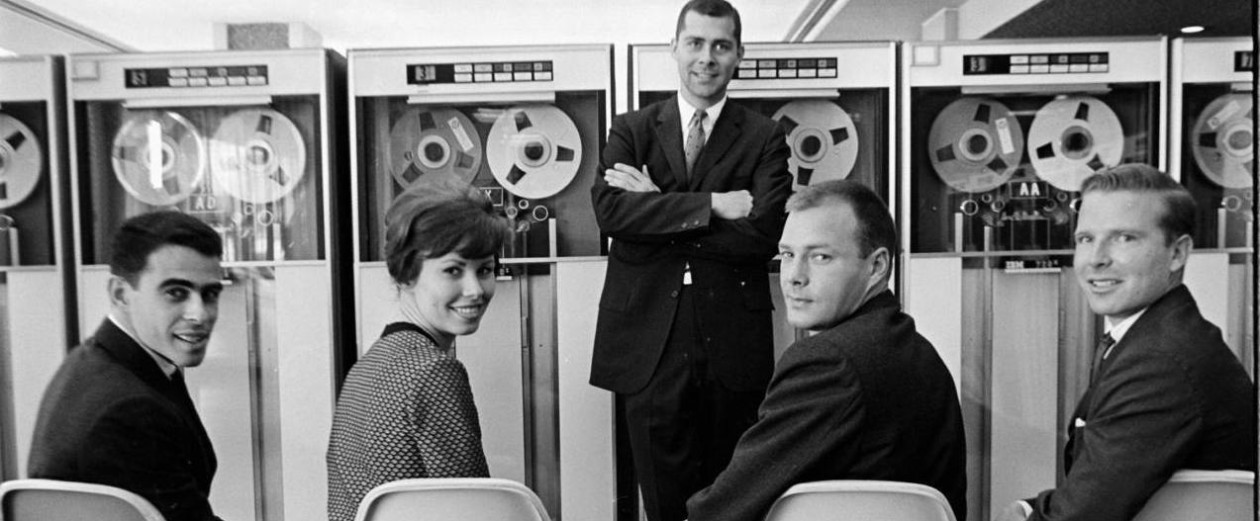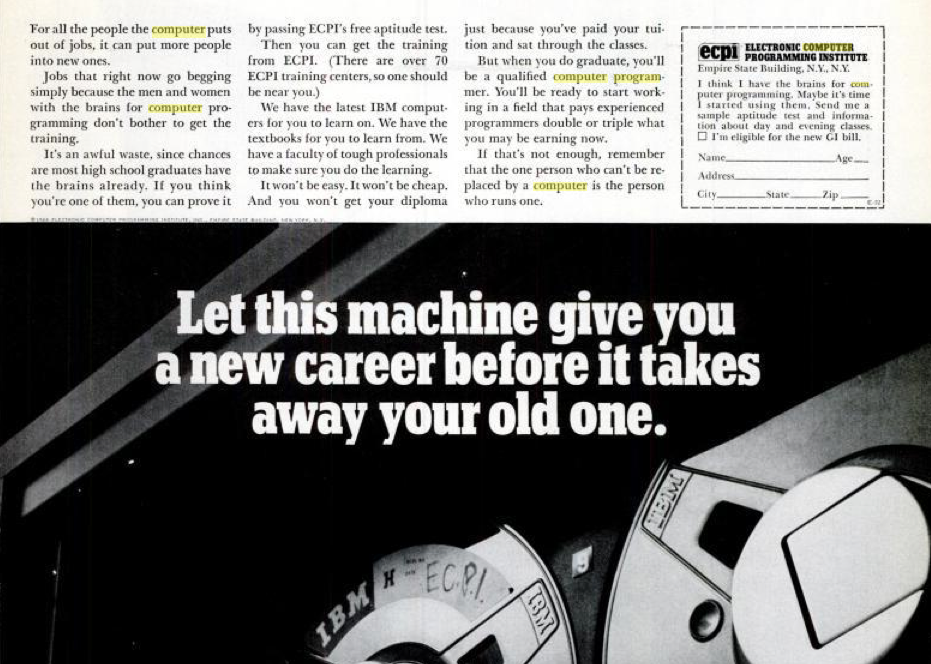… is the person who runs one.
I came across this advertisement for the Electronic Computer Programming Institute (ECPI) in the September 16, 1966 issue of Life Magazine. It is particularly notable for the way in which it plays on fears of technologically-driven unemployment: “For all the people the computer puts out of a job, it can put more people into new ones.”
During the mid-to-late 1960s, vocational schools offering training in computing sprung up all over the country, appealing to the massive growth of the computer industry and the desperate need for programmers to develop software for them. Some of these schools were legitimate attempts to provide much needed training in computing; others were fly-by-night operations that played on vulnerable populations (the un- or under-employed, women seeking to reenter the labor market after taking time off to have children). All promised a high-paying job after graduation. Most relied on some form of aptitude testing as an admissions criteria (although many admitted students regardless of their scores, with the sole condition that they were able to pay). Many did not even provide hands-on time with an actual computer, or at best provided an hour or two of time on a leased machine.1 Edward Markham, “EDP Schools: An Inside View”, Datamation 14:4 (1968)
- 1Edward Markham, “EDP Schools: An Inside View”, Datamation 14:4 (1968)


 Follow
Follow
I got my programmer training from ECPI in Fresno, CA. in 1974. They told us that ECPI (Electronic Computer Programming Institute) was nationwide and the headquarters office occupied the entire first floor of the Empire State Building. I don’t know if that was true, but a few years later I heard they were shut down by the Feds for filing fraudulent student loan applications.
Even before I graduated (the course lasted 5 months and cost $2000), I could tell that something was off. They started a new class every five weeks, and each class consisted of around 20 students. Fresno is not a large city (only 520,000 today and much smaller back then); this was years before the advent of the PC and there just weren’t that many computers in town, so where would all these people get jobs?
Not to worry. The majority of the kids were barely literate and had no business taking out loans to attend that school. I was one of the lucky ones–I actually got a career out of it, and over the years I ran into three or four others who also got good jobs, but it was definitely a shady organization.
For example: when I took the aptitude test, i scored higher than anybody in history! Later, I learned from others in my class that they also got the highest scores ever.
On the positive side, they taught us three languages (COBOL, RPG, and Basic Assembler), and most of the instructors were actually very good. Anyone with aptitude could make a go of it, and several did, but I still feel for those who simply got duped and were left with loans to repay. I ran into one of my fellow grads a few years later and he was driving a truck.
–John Bowers
Programmer/Analyst, retired
Hi john. I also went there in 74 and 75. Cobol, rpgll and neat 3. After completion they refused to even attemp to help place me, never did get into it commercially. Have written my own websites in full html. Stll build my own computers.
” the headquarters office occupied the entire first floor of the Empire State Building. ”
I went there. It’s technically true, but it was the sub-basement – there were two basement floors, and we were “LL”. Most people didn’t even know it was down there. It was the “first” floor in that it was the lowest floor in the building, but it wasn’t the floor numbered “1”.